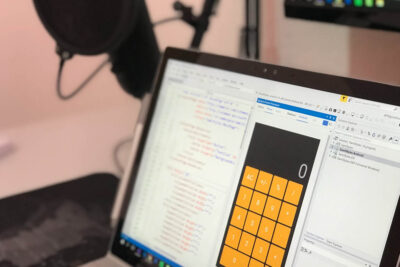The four risks of legacy tech lock-in
It's not just an IT problem
March 17, 2021
As student needs evolve, colleges and universities are looking to build adaptive and engaging student experiences. But the technology ecosystem on most campuses makes this difficult, with technologies acquired over decades sitting side-by-side in an incoherent portfolio. Overlapping functionalities across different platforms are common, and the sediment of past solutions makes efficiency virtually impossible. As one IT leader expressed, a university CIO’s job is often like running a technology museum.
As with any museum, different collections require different maintenance—and for campus technology, the most laborious is often the most integral to day-to-day operations. Student Information Systems (SIS) and Enterprise Resource Planning (ERP) systems ushered in a new era of digital record management in the tail-end of the 20th-century. Though cutting-edge at the time, these systems have stagnated even as they serve as the backbone for sprawling digital operations This is more than an IT problem: with the pace of change accelerating legacy tech “lock-in” presents serious challenges for innovation and agility.
Explore this infographic to learn more about the risks of legacy tech lock-in, and how EAB can support digital transformation at your institution.
-
Poor Data Accessibility
When peripheral systems that use newer technologies are introduced, developers must invest time and dollars to facilitate data integration. As the age gap between the myriad campus systems continues to grow, so too do the cost and complexity of integration and data access across the portfolio.
-
Impact of Poor Data Accessibility
It’s impossible to integrate data for a cross-campus view of the total student experience. 76% of large organizations have data trapped in legacy systems.
-
Escalating Cost of Ownership
As systems age, the skills to maintain them grow harder to access as technology professionals retire and the demand for new skills grows. At the same time, long-standing contracts have a growing price tag that seems increasingly disproportionate to the price of newer, more interoperable systems.
-
Impact of Escalating Cost of Ownership
IT staff have few resources to dedicate to new, innovative campus projects. 5% of higher ed IT budget available for “transformation”.
-
Flatlining Product Innovation
Even as contract terms increase, vendors with a broad user base and high levels of lock-in devote fewer and fewer resources to product development and innovation. As vendors reallocate their investments into newer offerings (and acquisitions), users of older products miss out on the latest updates and features.
-
Impact of Flatlining Product Innovation
Existing tech stagnates and users dissatisfaction grows. #1 strategic driver of M&A is acquiring new tech functionality (ahead of expanding product offerings).
-
Prohibitive Cost of Migration
The longer technologies remain in use, the more deeply embedded and broadly customized they become. When migration of these systems is ultimately forced, process-mapping and technology change management costs can be vast—in campus time and in dollars.
-
Impact of Prohibitive Cost of Migration
The costs of migration are impossible to justify amid budget uncertainties. 30 months: typical length of SIS migration.
More Blogs

4 lessons on financial sustainability and organizational transformation in higher ed

Higher education’s top cost savings opportunities
